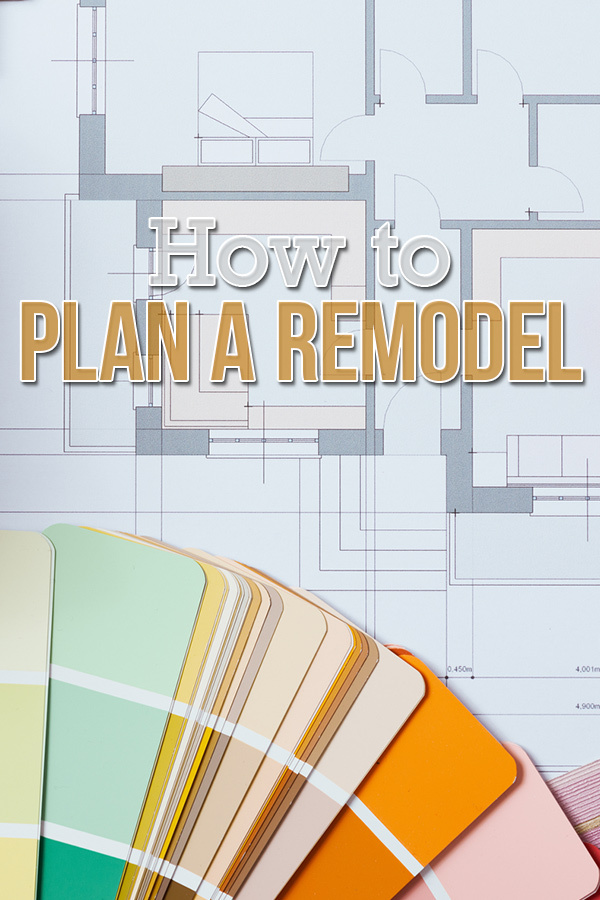The Beginners Guide to Planning Your Home Remodel
The Beginners Guide to Planning Your Home Remodel
Starting a home renovation project can be one of the most stressful and overwhelming experiences as a homeowner, especially in times of a pandemic. Many homeowners dive into the renovation process without any knowledge of what to expect. Its only after the renovation process has begun, and mishaps arise, that they regret not having a scheduled plan. For many your mind races in every direction thinking about the millions of combination possibilities and ideas, but the biggest obstacle can simply be knowing where to begin. Whether you’re planning a full-scale remodel or a simple renovation, it is important to take the correct measures to ensure your construction moves safely and in a timely manner.
Compare Your Wants vs. Needs
Naturally we all consider the day-to-day needs of our families first. Addressing those priorities by putting them at the top of your list is a no-brainer. Unless you truly have the resources to tell your contractor “Money is no object,” you and your partner need to have budgetary guidelines in place before finalizing the design of your home. That means being honest with yourself when it comes time to distinguish between the needs and wants for your new home. Some home renovations may appear as wants on your list but will actually be smart additions that add value. For example, those energy efficiency windows you were pondering can save money on your electricity bill while also updating your home. Another example of wants that bring value-added goodness when renovating your home would be some kitchen cabinetry upgrades that bring your old kitchen up to the modern century.
Set a Project Budget
Before setting the budget for your home renovation, you need to determine how you are financing it. If you are paying in cash, taking out a loan or applying for credit, the budget of your renovation will need to fit within the limit of your available funds. Once you know how much you can afford to spend, set aside 10 to 20 percent of your available funds for unexpected expenses. This is important. Something will go wrong or cost more than originally projected. By setting aside a percentage before beginning, you know you will have the funds available to finish your project no matter what happens.
Sticking to a budget is always a challenge. Creating a budget for a large project you’ve never done before is an even bigger challenge. When it comes to home renovation costs, building a feasible budget requires a detailed plan and plenty of research. To get an approximate idea of what your renovation budget should be, consider the value of your home as a whole. You don’t want to spend more than 10 to 15 percent of your home’s value on a single room. If you spend more, the value of the renovation will not proportionally add to the value of your home. For example, if your home is worth $100,000, the maximum you should spend on a kitchen or bathroom renovation is $15,000. If your house is worth more, the spend on a renovation could be higher. According to HomeAdvisor, the average cost of renovating a home that is less than 1,000 square feet is $18,347. For homes in the 3,000 to 4,000 square foot range, the average cost climbs to $36,121. Renovations made to an older home tend to cost more than a newer one, especially if the wiring, plumbing and other features aren’t up to code. Typically, you can expect to spend at least $100 to $200 per square foot on any renovation. When you’re deciding on your home renovation budget, it can be easier, and more affordable, to prioritize projects by room and build a budget around the cost of each individual project. Average cost to renovate:
Kitchen
$12,000 – $43,000
Bathroom
$6,000 – $24,000
Build Your Construction Team
The selection of your construction team can be the most critical decision you make as a building or project owner. You’re preparing to drop extensive amounts of time, money, and resources – not to mention stress – into a project that you need to succeed. The professionals you bring on board to be by your side can dictate the direction the project goes. Great partners can turn a project into a proud accomplishment that you will show off for years to come, and you will remember as a smooth-sailing point in your career. Poor partners can turn a project into a complete nightmare that keeps you awake at night and leads you to buy liquor in handles rather than bottles. The key is, as project or building owner, you need to put together an all-star team to get the job done right. Here at East Coast Construction SD, we have a strong belief that remodeling, and new construction should be a pleasant experience. We will do everything possible to ensure your construction project flows smoothly and is completed in a timely manner. Our well-trained team of professionals will skillfully carry out your project from concept to completion with their immeasurable expertise, diverse skills, and thorough understanding of construction. Satisfying our customers is our first priority and the chief reason for our outstanding reputation.
Prepare for Unexpected Issues to Arise
Completing your renovation on schedule is the goal of your home improvement and remodeling contractor. Unfortunately, sometimes problems crop up that make delays inevitable. While hidden problems can happen to any renovation project, they should never stand in the way of your dreams for your home. Knowing what to expect can help alleviate some of the stress that tends to come during a major remodel or renovation. Check out some of the most common, unexpected, things to prepare for:
Water Damage- Water damage is a serious but frequent issue for homeowners, and it is the cause of a lot of renovation headaches. Sometimes it starts with a leak in the roof, which can go undetected until the water works its way through the ceiling. Water damage can also be caused by faulty plumbing: a broken or leaky pipe. It can be sneaky. In some cases, you may not even realize that there was a leak until the walls are opened up for renovation
Foundation Issues- Discovering a foundation crack during a renovation is up there on the list of homeowner nightmares. Sometimes the problem is diagnosed by the appearance of cracks in walls and floors, gaps along the edges of rooms, or doors and windows that stick. Occasionally the issue is discovered during site work. Foundations do not always stand the test of time: sometimes the type of cement used in old houses can begin to crumble. Older houses may have grading issues which affected water runoff: retained water can cause the soil under the house to expand, threatening the integrity of the foundation. The weight of the house and the settling of the earth underneath can also put pressure on the foundation, causing the concrete to crack and buckle. Whatever has caused the foundation damage, it can be very costly to fix.
Outdated Electrical and Plumbing- At best, old electrical wiring may not be able to handle the demands of modern appliances. At worst, it can pose a dangerous fire risk. In any case, it is best to do whatever is necessary to bring it up to present standards. This will usually include making sure that all sockets are grounded. Your wiring should also include a ground-fault circuit interrupter, or GFCI. This quick circuit breaker will cut off electric power in the event of a ground-fault and will help prevent house fires. Galvanized pipes commonly used in the 1960’s should be replaced for health reasons and to protect your home from future water damage. Common modern pipe materials include PVC, CPVC or copper. We use the cutting-edge PEX pipe as it’s more flexible, easier to use, faster to install, and much less expensive than copper. It’s also much more reliable than either copper or CPVC.


